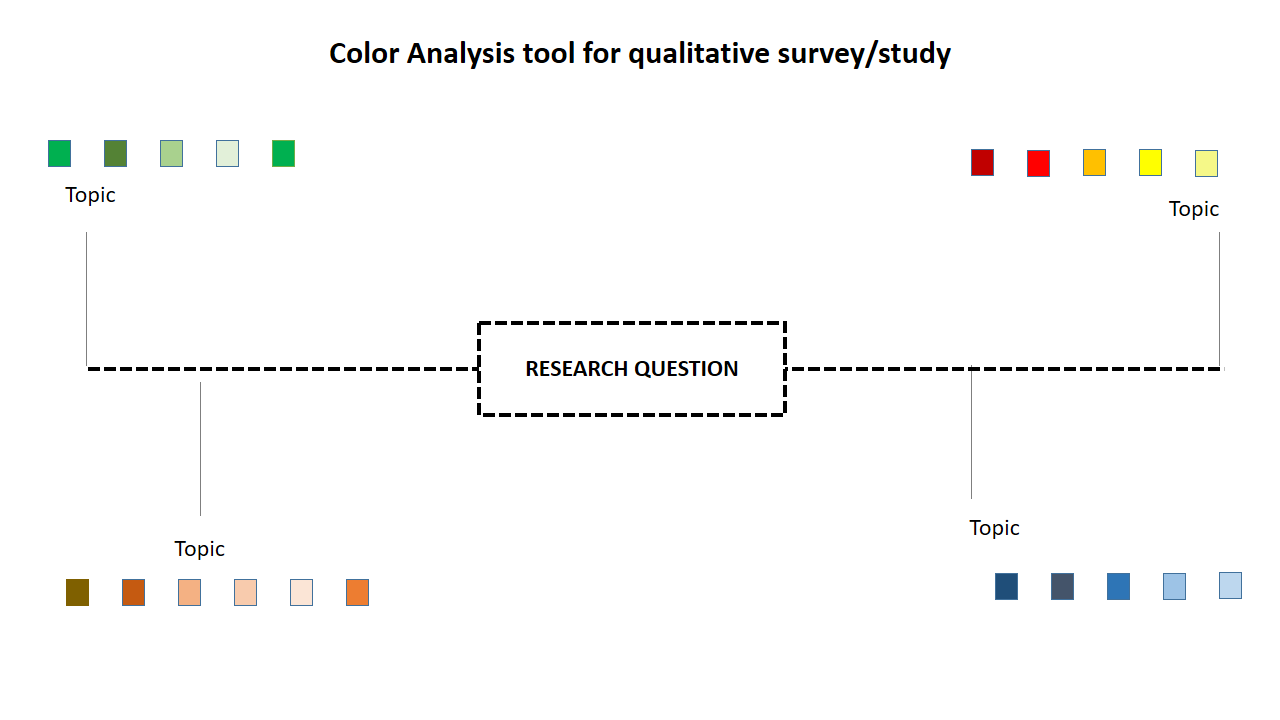Color Analysis Qualitative Study
Save, fill-In The Blanks, Print, Done!

Download Color Analysis Qualitative Study
(.pptx)- This Document Has Been Certified by a Professional
- 100% customizable
- This is a digital download (266.78 kB)
- Language: English
- We recommend downloading this file onto your computer.
What is the best way to make a Color Analysis tool for a qualitative research study? Do you need a Color Analysis template for a Qualitative Study? This template will help you analyze the colors used in your Qualitative Study. Download this Color Analysis tool for a qualitative research study template that will perfectly suit your needs!
A Color Analysis Qualitative Study typically refers to a research approach that involves qualitative methods to explore and understand the role and impact of color in a particular context. This type of study aims to gather in-depth insights and subjective interpretations related to color, often in the fields of design, psychology, marketing, or cultural studies. Here are some key aspects of a Color Analysis Qualitative Study:
- Qualitative Research Methods:
- Interviews: Researchers may conduct interviews with individuals to explore their perceptions, associations, and emotions related to specific colors.
- Focus Groups: Group discussions can be employed to facilitate conversations among participants, allowing researchers to observe interactions and gather diverse perspectives on color.
- Observations: Researchers might observe how people react to color in real-life situations, such as in retail environments, workspaces, or homes.
- Contextual Exploration:
- Cultural Context: Researchers may investigate how cultural factors influence color preferences and interpretations.
- Environmental Context: The study might explore how color impacts individuals in specific environments, like workplaces, healthcare settings, or educational institutions.
- Emotional and Psychological Responses:
- Emotional Associations: The study may aim to uncover the emotional responses evoked by different colors and how these responses vary among individuals.
- Psychological Impact: Researchers may explore how color influences mood, perception, and behavior.
- Design and Marketing Applications:
- Product and Branding: In a business context, a Color Analysis Qualitative Study could be applied to understand how color choices in product design or branding impact consumer perceptions and preferences.
- User Experience (UX) Design: Research in the realm of UX design might focus on how color affects user engagement and satisfaction in digital interfaces.
- Interdisciplinary Approach:
- Collaboration: Such studies often involve collaboration between researchers from different disciplines, such as psychology, design, marketing, and sociology, to provide a holistic understanding of the subject.
Download this Color Analysis Qualitative Study template now and make it your own. You can customize it to fit your exact needs, add and remove elements, and change the font style. With this document, you can easily create a qualitative study that accurately captures your research.
DISCLAIMER
Nothing on this site shall be considered legal advice and no attorney-client relationship is established.
Leave a Reply. If you have any questions or remarks, feel free to post them below.
Research Templates
We provide a professional fundamental and applied research template collection. Check out and download the most suitable sample research templates in Word or PDF!
Read moreRelated templates
Latest templates
Latest topics
- GDPR Compliance Templates
What do you need to become GDPR compliant? Are you looking for useful GDPR document templates to make you compliant? All these compliance documents will be available to download instantly... - Google Docs Templates
How to create documents in Google Docs? We provide Google Docs compatible template and these are the reasons why it's useful to work with Google Docs... - IT Security Standards Kit
What are IT Security Standards? Check out our collection of this newly updated IT Security Kit Standard templates, including policies, controls, processes, checklists, procedures and other documents. - Letter Format
How to format a letter? Here is a brief overview of common letter formats and templates in USA and UK and get inspirited immediately! - Google Sheets Templates
How to work with Google Sheets templates? Where to download useful Google Sheets templates? Check out our samples here.
cheese

